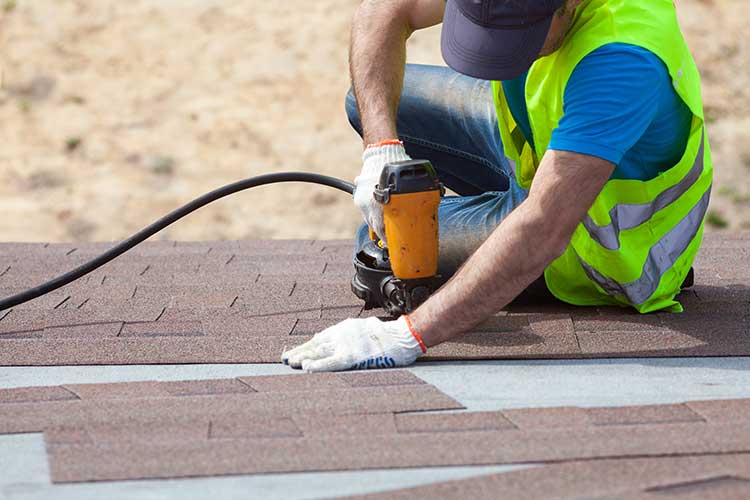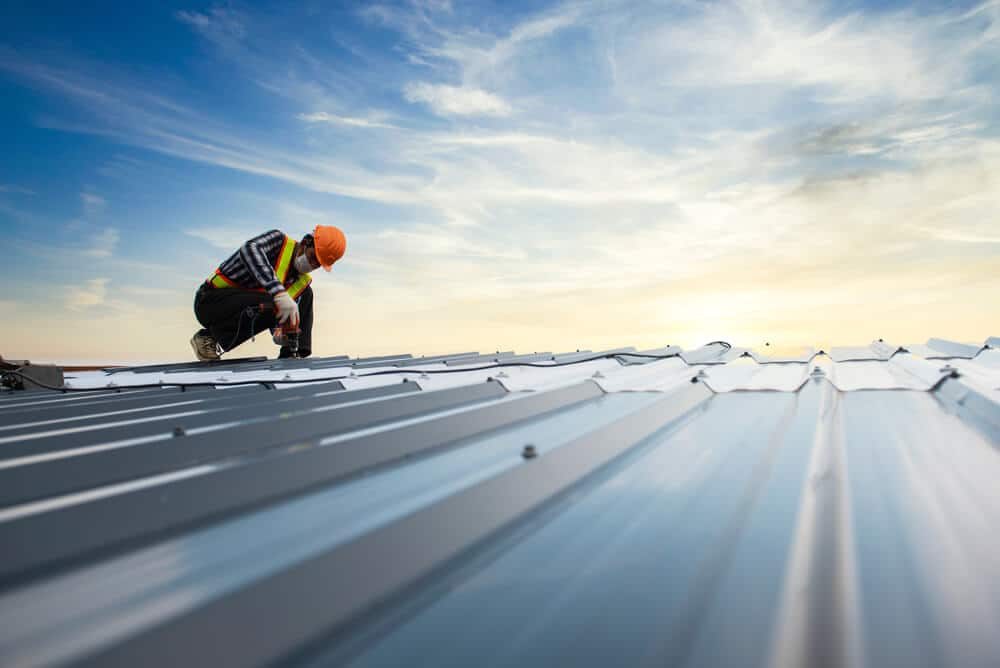The Roof Substitute Process: What to Anticipate from Beginning to Finish
Understanding the roof covering replacement process is important for homeowners considering this substantial financial investment. Each stage, from the preliminary analysis of your roof's condition to the meticulous setup of new materials, plays an important role in guaranteeing long-lasting toughness and efficiency.
Analyzing Your Roofing Problem
Examining your roofing system condition is a vital action in the roof replacement procedure, as it determines the needed actions to guarantee architectural honesty and longevity. An extensive examination starts with a visual examination, where indications of wear, damages, or degeneration are recognized. Look for missing roof shingles, crinkling sides, or granule loss, as these indicate prospective vulnerabilities. In addition, look for leakages or water discolorations on interior ceilings and walls, which can symbolize underlying concerns.
It is also necessary to analyze the roof covering's blinking and gutters, as these components play an essential function in directing water far from the roofing and avoiding dampness buildup. Any rusted or harmed flashing ought to be noted, as it may need fixing or substitute - roof replacement. In addition, take into consideration the age of the roofing system; most roof materials have a lifespan that, when gone beyond, warrants replacement.
Choosing Replacement Materials
Picking the ideal materials for your roof replacement is essential to achieving longevity, visual appeals, and energy efficiency. The choice of roof covering products can dramatically impact the life expectancy of your roofing, as well as its efficiency under numerous weather condition conditions. Common alternatives consist of asphalt shingles, steel roof, floor tile, and slate, each offering distinct benefits and downsides.
Steel roof, known for its durability and resistance to extreme climate, can likewise improve power performance with reflective residential properties. Floor tile roofing systems give a traditional look and are incredibly resilient, but they can be larger and more pricey.
When picking materials, think about aspects such as climate, developing codes, and your spending plan. Additionally, think about the environmental impact of your choices; several producers now supply eco-friendly alternatives. Ultimately, the best roof covering material will certainly not only secure your home but additionally complement its architectural style, guaranteeing that your investment stands the test of time.

Working With a Roofer
Once you have figured out the suitable materials for your roofing substitute, the following crucial step entails hiring a qualified professional roofer. Selecting the appropriate contractor is necessary to make sure that the installment is finished securely, successfully, and based on local building ordinance.
Begin by looking for recommendations from pals, family members, or next-door neighbors that have actually recently undergone roof replacements. roof replacement. On the internet evaluations and ratings can additionally supply useful understandings right into a specialist's credibility. When you have a shortlist, verify each contractor's qualifications, including licensing, insurance coverage, and any type of relevant qualifications
Arrange for in-home read review price quotes to examine the range of job and acquire expense estimates. During these appointments, ask regarding their experience with your chosen products and request recommendations from previous clients. A trusted professional should be clear about their process, timelines, and service warranties.
Furthermore, guarantee that the contractor supplies a written agreement laying out all task details, consisting of payment timetables and completion timelines. This action not only protects you however also develops clear assumptions. By taking on complete research and due diligence, you'll be well-equipped to choose a service provider that satisfies your needs and delivers top quality workmanship.

The Setup Refine
The installation process of a roof replacement is an important stage that calls for cautious implementation and skilled craftsmanship. This phase commonly starts with the elimination of the existing roof products. Roof covering specialists will certainly make sure that all old shingles, underlayment, and flashing are completely removed to expose the roof deck, permitting an extensive inspection for any type of underlying damages.
Following this, the new tiles or roof products are set up according to the manufacturer's requirements and regional building codes. Interest to detail is paramount throughout this stage, as correct positioning and secure attachment are vital for the roofing system's longevity and efficiency.
Additionally, the setup of ventilation systems and blinking around smokeshafts, vents, and various other protrusions is vital to guarantee optimum air flow and protect against leaks. Lastly, the project concludes with a detailed clean-up of the work site, leaving the homeowner with a high quality roof covering that offers defense and peace of mind for years to find.
Post-Replacement Care
Post-replacement care is necessary to guaranteeing the durability and efficiency of a freshly installed roofing system. After the installation process is full, property owners have a peek at these guys ought to take particular steps to keep their roof's stability and functionality.

Second of all, regular cleaning is vital. Maintaining rain gutters and downspouts free of particles will certainly make certain appropriate water drainage, protecting against water damages and mold development.
Additionally, it is a good idea to cut looming branches to decrease the risk of physical damages and discover here avoid fallen leaves from building up on the roofing system.
Verdict
In verdict, the roof substitute procedure includes a number of crucial stages, consisting of evaluating the roofing system's condition, selecting proper products, working with a qualified contractor, and carrying out the installment with treatment. Focus to detail throughout installation, such as guaranteeing correct air flow and blinking, significantly impacts the roofing system's performance and longevity.